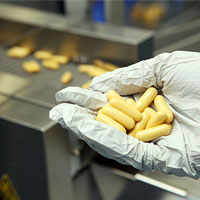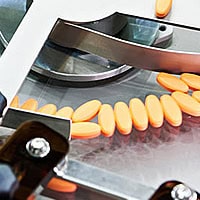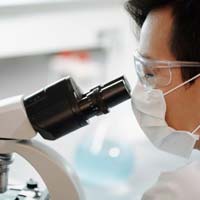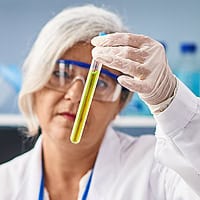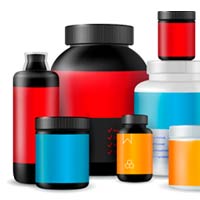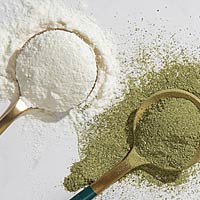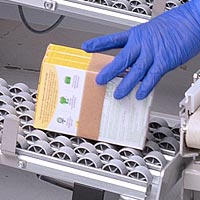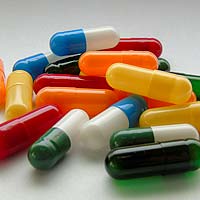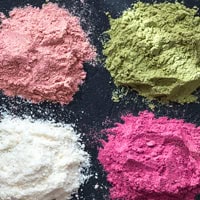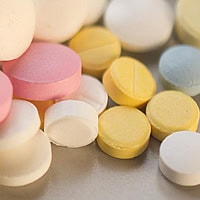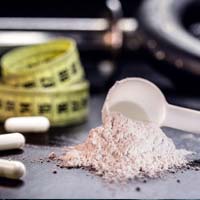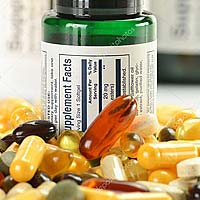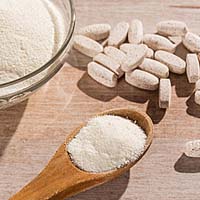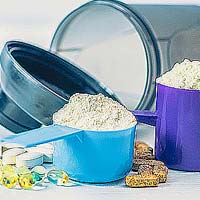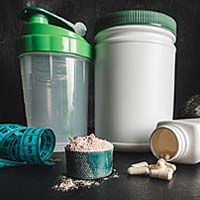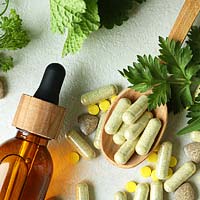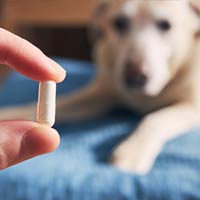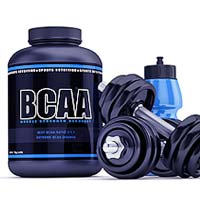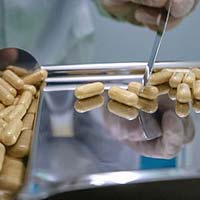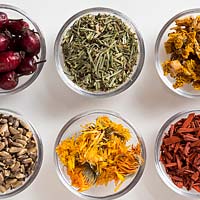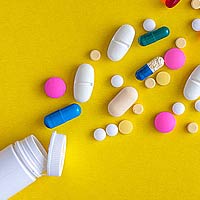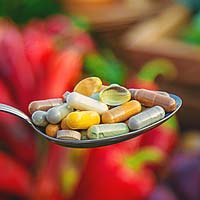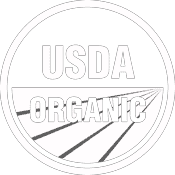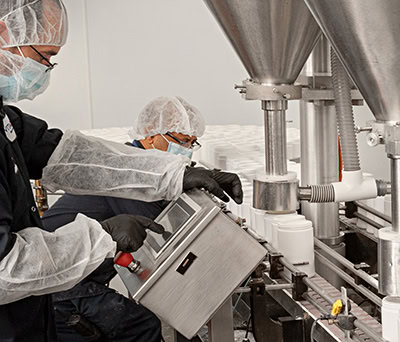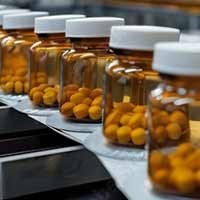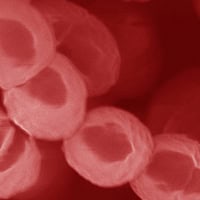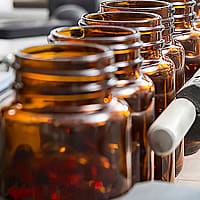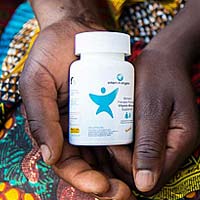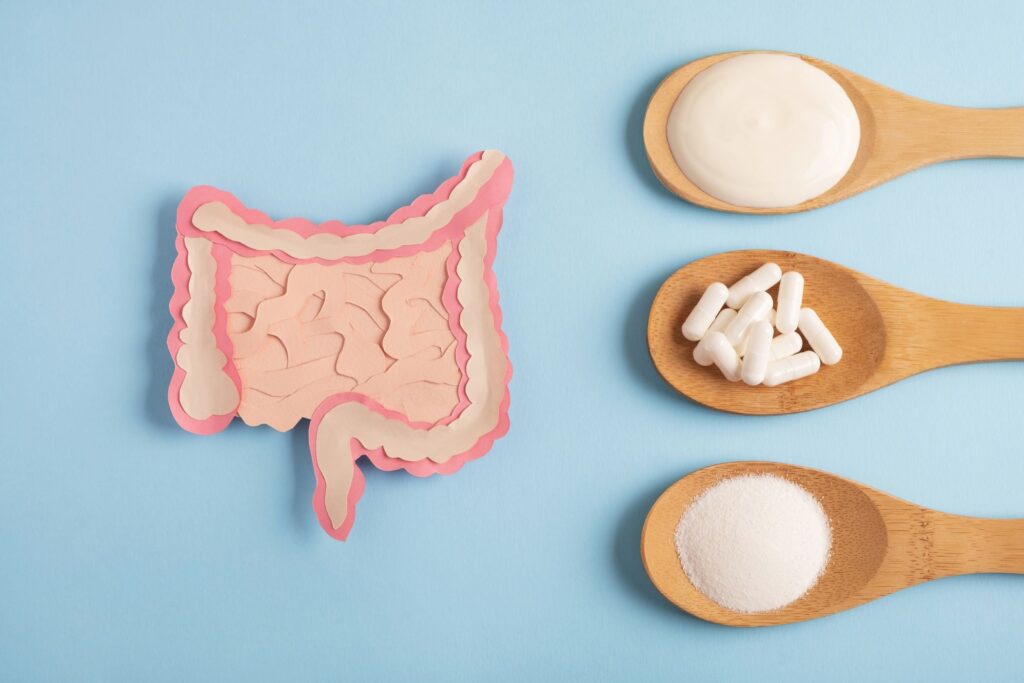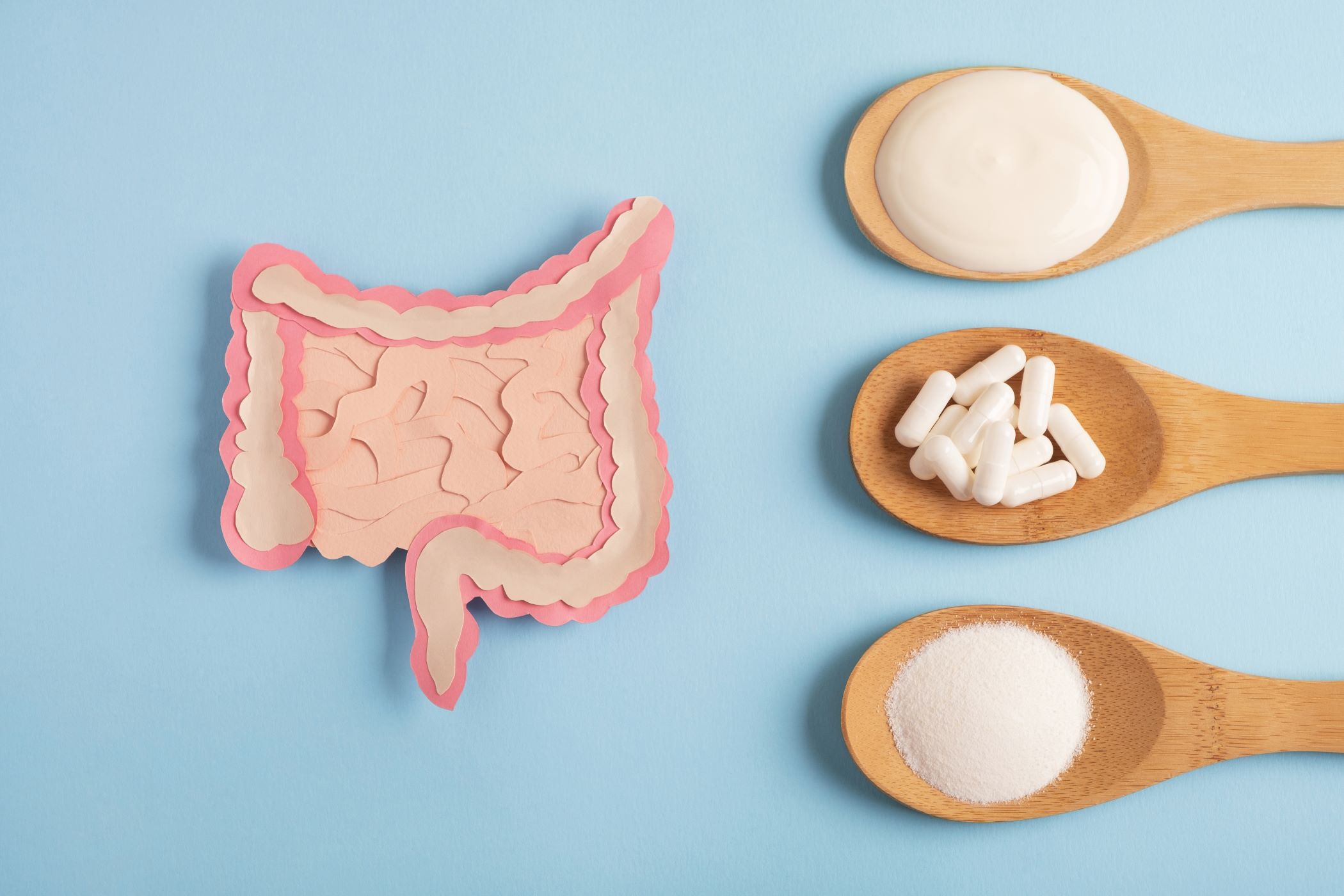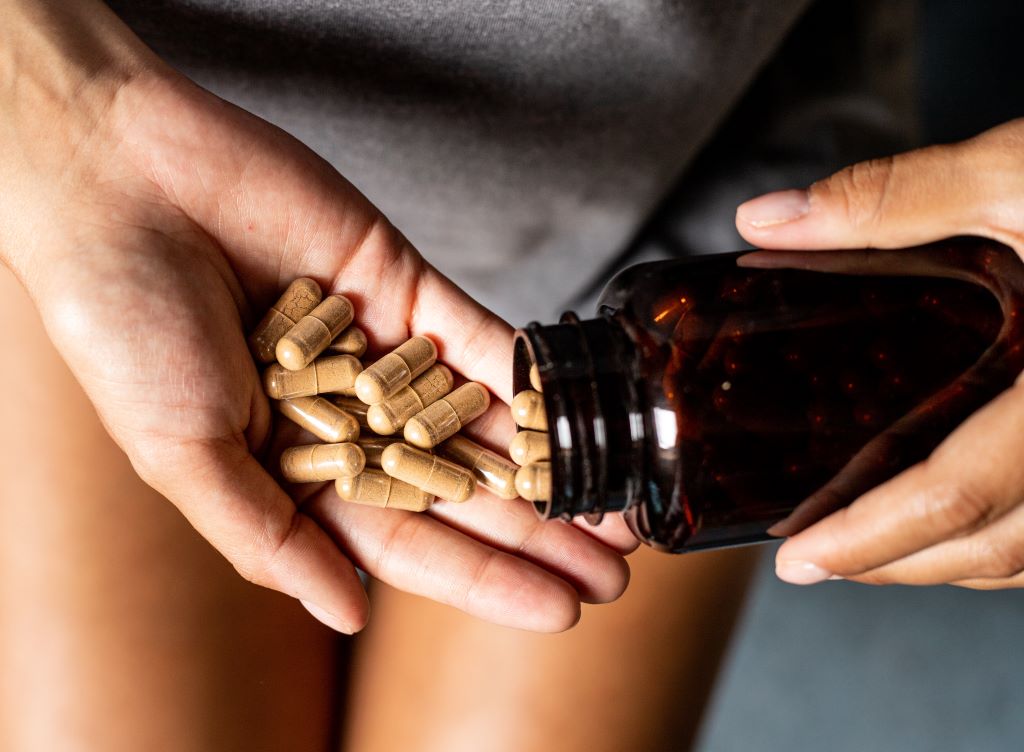With gut-friendly products hitting the shelves every day, it appears that gut health is a consumer trend that is here to stay. Gut health has become a mainstream topic rather than one simply understood by physicians and other healthcare professionals.[1]
While Hippocrates may have been incorrect in proposing that all diseases begin in the gut, there is no doubt that the gut does play a critical role in human health and wellness.[2]
The primary consumer target for gut health is the microbiome (i.e., the totality of the trillions of microbes/bacteria living in our gut), and supportive supplements for gut health typically contain one of—or a combination of one of these three: prebiotic, probiotic, and postbiotic. When combined, they are frequently referred to as synbiotics.
This article will answer the question, what is the difference between prebiotics, probiotics, and postbiotics?
The Fundamentals of Gut Health: Demystifying the Microbiome
The microbiome is defined as the collection of all microbes, such as bacteria, fungi, viruses, and their genes, that naturally live on our bodies and inside us.[3] The human microbiome is diverse, and each body site has a different community of microbes, including the gut, skin, and oral and nasal cavities. In the context of this article, we are limiting the discussion to the gut microbiome.
The gut microbiome has many functions, including functioning as part of the digestive system, energy recovery from the metabolism of non-digestible components of foods, protection of a host from pathogenic invasion, and modulation of the immune system.[4]
What are Probiotics?
According to the International Scientific Association for Probiotics and Prebiotics (ISAPP), probiotics are defined as, “live microorganisms that, when administered in adequate amounts, confer a health benefit on the host.”[5]
Examples of probiotics include Lactobacillus acidophilus and Bifidobacterium longum. Consumer demand for probiotics is enormous. The size of the probiotics market is expected to reach $213.1 billion by 2032, growing at a CAGR of 12.4% from 2023 to 2032.[6] As a supplement, probiotics may be provided as capsules, powders, and tablets.
Health Benefits of Probiotics
There are many different probiotic species, most of which offer support for immune health and gut/digestive health.
In addition, some probiotic species and strains offer other benefits such as support for weight management, cholesterol, metabolism, vaginal health, sleep, and many more.
Here is a list of probiotic genera commonly used in dietary supplements and their reported list of health benefits:
- Lactobacillus – Lactobacillus refers to a group of lactic acid-producing, friendly bacteria[7], [8] that make up many of the 400 normal probiotic species in the human body.[9] [10] [11] [12] [13] Lactobacilli provide many benefits, including the following:
- Inducing growth factors and increasing the bioavailability of minerals.[14]
- Stabilizing the mucosal barrier and decreasing intestinal permeability.[15] [16]
- Maintaining a balance of healthy bacteria vs. undesirable bacteria by producing lactic acid and hydrogen peroxide.[17] [18] [19]
- Immunomodulating effects[20] [21] [22] such as promoting healthy immune function.[23]
Some of the more popular Lactobacillus strains include L. acidophillus DDS-1 and L. rhamnosus GG.
- Bifidobacterium – Bifidobacteria normally colonize in the human colon[24] [25] and, like Lactobacillus species, also produce lactic acid. These probiotics are important microorganisms in the intestine that help create a microbial barrier to non-beneficial substances.[26] [27] In fact, some species of Bifidobacteria bind to the intestinal mucosa and interfere with the attachment of non-beneficial substances.[28] [29] Since Bifidobacteria disappear from the feces within 2 weeks after discontinuing supplementation, this suggests that there is no long-term colonization[30] [31] so Bifidobacteria must be used regularly to achieve a continued benefit. Some of the more popular Bifidobacteria strains include Bifidobacterium lactis BI-07 and Bifidobacterium animalis subsp. lactis CECT 8145 BPL1.
- Bacillus – Probiotics in the Bacillus genus are spore-forming. The spore is a naturally occurring protective encasement that allows the probiotic within to survive transit through the stomach and small intestine intact.[32] Different Bacillus species offer different benefits:
Some of the more popular Bacillus strains include Bacillus subtilis DE111 and Bacillus coagulans MTCC5856.
- Streptococcus – Some of the probiotics in this genus reside in the oral cavity (i.e., the mouth) and have benefits for dental and throat health[39] [40] [41] [42]. The most important of these include Streptococcus salivarius K12 and Streptococcus salivarius M18.
What are Prebiotics?
According to the International Scientific Association for Probiotics and Prebiotics (ISAPP), prebiotics are defined as “a substrate that is selectively utilized by host microorganisms conferring a health benefit.”[43] Prebiotics are typically fiber compounds that human beings cannot digest. However, prebiotics can be digested by the friendly probiotic bacteria that reside in our gut nourishing them, stimulating their growth or activity, and helping them to colonize the large intestine.[44]
Examples of prebiotics include fructooligosaccharides (FOS) and galactooligosaccharides (GOS).
The global prebiotic Fiber market was projected to reach a valuation of $6.67 billion by 2023, recording a CAGR of 6.3% from 2023 to 2033.[45]
Health Benefits of Prebiotics
As previously stated, prebiotics feed and help stimulate the growth or activity of probiotics in our gut. For example, fructooligosaccharides, xylooligosaccharides, and acacia gum—to name a few—have been shown to increase Bifidobacterium counts[46] [47] [48]
In addition, prebiotics have shown a range of other benefits. For example:
- Xylooligosaccharides have been shown to help maintain healthy cholesterol levels already in a normal range[49] [50] and improve occasional constipation[51] [52].
- Acacia gum has been shown to help support weight loss efforts by promoting satiety/a feeling of fullness[53] and promoting regularity[54].
- Galactooligosaccharides have been shown to help improve skin appearance including a reduction in wrinkles and skin moisture loss[55].
What are Postbiotics?
According to International Scientific Association for Probiotics and Prebiotics (ISAPP), postbiotics are defined as “a preparation of inanimate microorganisms and/or their components that confers a health benefit on the host.”[56]
A postbiotic can be any probiotic that has been pasteurized or heat-treated, and yet still provides health benefits—a sort of zombie probiotic if you will.
Although a postbiotic is not a live organism, it still provides probiotic-like effects. Since it is not alive, it has the added benefit of not having the same stability issue as probiotics.
The estimated value of the postbiotic supplements market is $10.8 million as of June 2024[57]. With the rising awareness about the health benefits of these products, the demand for postbiotic supplements is expected to register a CAGR of 10.9% from 2024 to 2034, reaching a valuation of $30.5 million by 2034.
Health Benefits of Postbiotics
We have only begun to scratch the surface of postbiotic benefits—mostly because almost any prebiotic can become a postbiotic and then undergo research to determine potential benefits.
For the moment, however, the following are two of many postbiotics with research to support their efficacy:
- Lactobacillus plantarum strain L-137 (ImmunoLP20®) has been shown to augment acquired immunity[58] (especially Th1-related immune functions in healthy subjects) and support upper respiratory health[59].
- Akkermansium mucinipahila has been shown to support metabolic health, help activate GLP-1-inducing protein, help decrease body weight, and help decrease hip and waist size, but more studies are needed[60].
What are Synbiotics
As previously stated, synbiotics (i.e., synergistic biotics) are a biotics combination, typically pre-and probiotics, but now it may include postbiotics as well.
A symbiotic combination makes sense on a couple of levels. First, prebiotics feed and nurture probiotics, so there is a good rationale for combining the two. Now that postbiotics are available, a combination of all three makes for a comprehensive approach to supporting the health of the microbiome with the three categories of biotics. Furthermore, the postbiotics don’t need to be fed, so there won’t be any competition between them and the probiotics for the prebiotic food source.
Health Benefits of Synbiotics
Prebiotics help expand the existing colonies of probiotics residing in the gut, so the use of a synbiotic combination has the potential to result in greater overall microbiome diversity in the gut.
Additionally, a synbiotic combination offers the benefits of each of the individual biotic categories, expanding the structure/function claims that can be made about the product, as well as consumer satisfaction with the synbiotic.
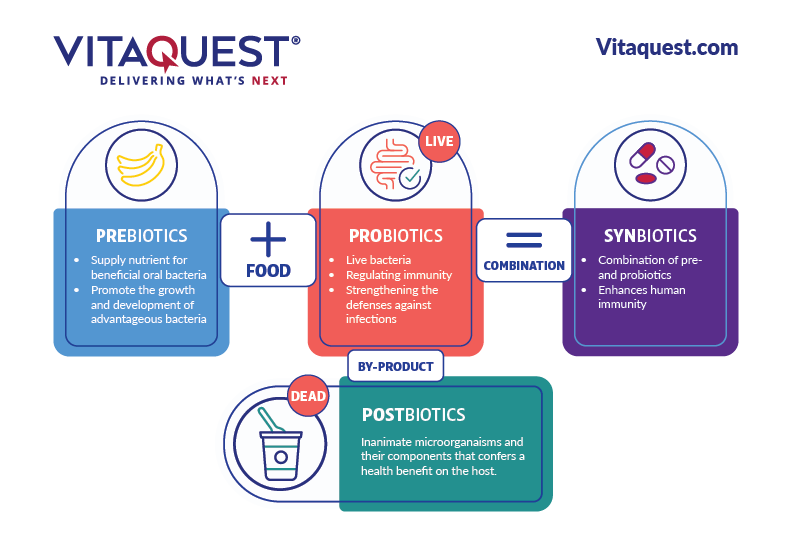
Why Gut Health Supplements Present a Golden Opportunity for Brands
According to an article in Food Navigator, the gut health business is “an unstoppable health trend”, and “one of the single biggest changes to hit the food and drinks industry in recent decades.”[61] The same article attributes this trend to the discovery of gut microflora and the concept of the microbiome that entered the wider public consciousness.
Prebiotics, probiotics, postbiotics, and synbiotics can be found in capsules, powders, and gummies, as well as in functional foods like yogurt, cookies, and chocolate.
Now, when you consider that for every ten adults in the world, four suffer from functional gastrointestinal disorders of varying severity[62], it is clear why gut health supplements present a golden opportunity for brands that have not yet entered this category.
How Vitaquest Can Help?
Vitaquest, a trusted contract manufacturer with over 45 years of experience, has an extensive background in probiotic supplement manufacturing and has created many pre-, pro-, post-, and synbiotic products for its clients.
Not all contract manufacturers can produce these products, especially probiotics which require special handling and storage to maintain stability. Vitaquest’s experience, guidance, and technical expertise ensure your biotic product(s) will meet or exceed the standards for cutting-edge supplements. We were also the first supplement contract manufacturer to successfully develop a shelf-stable probiotic.
Concluding Thoughts
The primary consumer target for gut health is the microbiome, and supportive supplements for gut health typically contain one of—or a combination of one of these three: prebiotics, probiotics, and postbiotics:
- Probiotics are viable microorganisms that confer health benefits.
- Prebiotics are the food for probiotics, helping them to grow and maintain a healthy presence in the gut.
- Postbiotics are any probiotic that has been pasteurized or heat-treated, and yet still provides health benefits.
- Synbiotics are a combination of any or all of these three biotics.
Vitaquest can help you create customized dietary supplements expertly formulated to stand out in this competitive and lucrative category. Call 800-526-9095 to speak with one of our knowledgeable sales executives or request a competitive nutraceutical manufacturing price quote if you’ve already finalized your project requirements.
Frequently Asked Questions
Q: What is the difference between prebiotics, probiotics, and postbiotics?
Probiotics are viable microorganisms that confer health benefits. Prebiotics are the food for probiotics, helping them to grow and maintain a healthy presence in the gut. Postbiotics are any probiotic that has been pasteurized or heat-treated, and yet still provides health benefits.
Q: Can you take prebiotics, probiotics, and postbiotics together?
Yes, it is recommended to do so. The combination of more than one of these together is known as a “synbiotic” or synergistic biotic.
Q: What are the downsides of postbiotics?
There are no downsides, per se. Postbiotics don’t have stability issues since they are no longer living.
Q: Can you take a prebiotic and probiotic together?
Yes, it is recommended to do so. The combination of the two together is known as a “synbiotic” or synergistic biotic.
Q: Who should not take prebiotics?
It is always wise to consult a healthcare professional before using a prebiotic or any dietary supplement if you are pregnant or if you are being treated for a health condition.
Q: Who should not take prebiotics and probiotics?
It is always wise to consult a healthcare professional before using a prebiotic, probiotic, or any dietary supplement if you are pregnant or if you are being treated for a health condition.
Q: Are there negatives to prebiotics?
It is always wise to consult a healthcare professional before using a prebiotic or any dietary supplement if you are pregnant or if you are being treated for a health condition.
Q: Do postbiotics help you lose weight?
There are some postbiotics, such as Akkermansium mucinipahila, which may help weight management, but more studies are needed.
Q: What foods are postbiotics?
Foods are not postbiotics. Postbiotics are any probiotic that has been pasteurized or heat-treated, and yet still provides health benefits.
Q: Is postbiotic the same as probiotic?
No. Probiotics are viable microorganisms that confer health benefits. Postbiotics are any probiotic that has been pasteurized or heat-treated, and yet still provides health benefits.
Q: Do you need a pre, pro, and postbiotic?
While you don’t necessarily “need” a pre, pro, and postbiotic, the combination offers a range of potential health benefits.
Q: What are examples of postbiotics?
Examples of two postbiotics include Lactobacillus plantarum strain L-137 (ImmunoLP20®) which has been shown to augment acquired immunity, support the function of an influenza vaccine, support upper respiratory health, and help support a normal inflammatory response; and Akkermansium mucinipahila which may support metabolic health, helps activate GLP-1 inducing protein, help decrease body weight, help decrease hip and waist size.
Q: What is the purpose of a postbiotic?
Postbiotics are any probiotic that has been pasteurized or heat-treated, and yet still provides health benefits.
References
[1] Eastlake D. Gut health: Why this consumer trend is here to stay. FoodNavigator Europe. Last updated 20 Mar 2024. Retrieved June 21, 2024 from https://www.foodnavigator.com/Article/2024/03/14/Gut-health-Why-this-consumer-trend-is-here-to-stay#.
[2] Gunnars K. Does all disease begin in your gut? The surprising truth. Healthline. February 27, 2019. Retrieved June 21, 2024 from https://www.healthline.com/nutrition/does-all-disease-begin-in-the-gut.
[3] Microbiome. The National Institute of Environmental Health Sciences. Last Reviewed: March 22, 2024. Retrieved June 21, 2024 from https://www.niehs.nih.gov/health/topics/science/microbiome#:~:text=Introduction,to%20human%20health%20and%20wellness..
[4] Bull MJ, Plummer NT. Part 1: The Human Gut Microbiome in Health and Disease. Integr Med (Encinitas). 2014;13(6):17-22.
[5] Probiotics. ISAPP. Retrieved June 19, 2024 from https://isappscience.org/for-consumers/learn/probiotics/.
[6] Acumen Research and Consulting. Probiotics Market is forecasted to Reach USD 213.1 Billion by 2032, growing at a 12.4% CAGR from 2023 to 2032. GlobeNewswire. October 5, 2023. https://www.globenewswire.com/news-release/2023/10/06/2755864/0/en/Probiotics-Market-is-forecasted-to-Reach-USD-213-1-Billion-by-2032-growing-at-a-12-4-CAGR-from-2023-to-2032.html
[7] Casas IA, Dobrogosz WJ. Validation of the probiotic concept: Lactobacillus reuteri confers broad-spectrum protection against disease in humans and animals. Microbial Ecology in Health and Disease 2000;12:247-85.
[8] Fujisawa T, Benno Y, Yaeshima T, Mitsuoka T. Taxonomic study of the Lactobacillus acidophilus group, with recognition of Lactobacillus gallinarum sp. nov. and Lactobacillus johnsonii sp. nov. and synonymy of Lactobacillus acidophilus group A3 (Johnson et al. 1980) with the type strain of Lactobacillus amylovorus (Nakamura 1981). Int J Syst Bacteriol 1992;42:487-91.
[9] McGroarty JA. Probiotic use of lactobacilli in the human female urogenital tract. FEMS Immunol Med Microbiol 1993;6:251-64.
[10] Bruce AW, Reid G. Intravaginal instillation of Lactobacilli for prevention of recurrent urinary tract infections. Can J Microbiol 1988;34:339-43.
[11] Gupta K, Stapleton AE, Hooton TM, et al. Inverse association of H2O2-producing Lactobacilli and vaginal Escherichia coli colonization in women with recurrent urinary tract infections. J Infect Dis 1998;178:446-50.
[12] Madsen KL, Doyle JS, Jewell LD, et al. Lactobacillus species prevents colitis in interleukin 10 gene-deficient mice. Gastroenterology 1999;116:1107-14.
[13] Casas IA, Dobrogosz WJ. Validation of the probiotic concept: Lactobacillus reuteri confers broad-spectrum protection against disease in humans and animals. Microbial Ecology in Health and Disease 2000;12:247-85.
[14] Madsen KL, Doyle JS, Jewell LD, et al. Lactobacillus species prevents colitis in interleukin 10 gene-deficient mice. Gastroenterology 1999;116:1107-14.
[15] Shornikova AV, Casas IA, Isolauri E, et al. Lactobacillus reuteri as a therapeutic agent in acute diarrhea in young children. J Pediatr Gastroenterol Nutr 1997;24:399-404.
[16] Casas IA, Dobrogosz WJ. Validation of the probiotic concept: Lactobacillus reuteri confers broad-spectrum protection against disease in humans and animals. Microbial Ecology in Health and Disease 2000;12:247-85.
[17] McGroarty JA. Probiotic use of lactobacilli in the human female urogenital tract. FEMS Immunol Med Microbiol 1993;6:251-64.
[18] Velraeds MM, van der Mei HC, Reid G, et al. Inhibition of initial adhesion of uropathogenic Enterococcus faecalis by biosurfactants from Lactobacillus isolates. Appl Environ Microbiol 1996;62:1958-63.
[19] Gupta K, Stapleton AE, Hooton TM, et al. Inverse association of H2O2-producing Lactobacilli and vaginal Escherichia coli colonization in women with recurrent urinary tract infections. J Infect Dis 1998;178:446-50.
[20] Schultz M, Sartor RB. Probiotics and inflammatory bowel diseases. Am J Gastroenterol 2000;95:S19-21.
[21] deRoos NM, Katan MB. Effects of probiotic bacteria on diarrhea, lipid metabolism, and carcinogenesis: a review of papers published between 1988 and 1998. Am J Clin Nutr 2000;71:405-11.
[22] Isolauri E, Sutas Y, Kankaanpaa P et al. Probiotics: effects on immunity. Am J Clin Nutr 2001;73:444S-450S.
[23] Pelto L, Ioslauri E, Lilius EM, et al. Probiotic bacteria down-regulate the milk-induced inflammatory response in milk-hypersensitive subjects but have an immunostimulatory effect in healthy subjects. Clin Exp Allergy 1998;28:1474-9.
[24] Lievin V, Peiffer I, Hudault S, et al. Bifidobacterium strains from resident infant human gastrointestinal microflora exert antimicrobial activity. Gut 2000;47:646-52.
[25] Macfarlane GT, Cummings JH. Probiotics and prebiotics: can regulating the activities of intestinal bacteria benefit health? BMJ 1999;318:999-1003.
[26] Lievin V, Peiffer I, Hudault S, et al. Bifidobacterium strains from resident infant human gastrointestinal microflora exert antimicrobial activity. Gut 2000;47:646-52.
[27] Rastall RA. Bacteria in the gut: friends and foes and how to alter the balance. J Nutr 2004;134:2022S-2026S.
[28] Lievin V, Peiffer I, Hudault S, et al. Bifidobacterium strains from resident infant human gastrointestinal microflora exert antimicrobial activity. Gut 2000;47:646-52.
[29] Chen RM, Wu JJ, Lee SC, et al. Increase of intestinal Bifidobacterium and suppression of coliform bacteria with short-term yogurt ingestion. J Dairy Sci 1999:82:2308-14.
[30] Chiang BL, Sheih YH, Wang LH, et al. Enhancing immunity by dietary consumption of a probiotic lactic acid bacterium (Bifidobacterium lactis HN019): optimization and definition of cellular immune responses. Eur J Clin Nutr 2000;54:849-55.
[31] Lewis SJ, Freedman AR. Review article: the use of biotherapeutic agents in the prevention and treatment of gastrointestinal disease. Aliment Pharmacol Ther 1998;12:807-22.
[32] Ngo TH. Characterization of Bacillus Species Used for Oral Bacteriotherapy and Bacterial Prophylaxis of Gastrointestinal Disorders. Appl Environ Microbiol. 2000 Dec;66(12):5241-7.
[33] Mazruei Arani N, Emam-Djomeh Z, Tavakolipour H, Sharafati-Chaleshtori R, Soleimani A, Asemi Z. The Effects of Probiotic Honey Consumption on Metabolic Status in Patients with Diabetic Nephropathy: a Randomized, Double-Blind, Controlled Trial. Probiotics Antimicrob Proteins. 2019;11(4):1195-1201.
[34] Trotter RE, Vazquez AR, Grubb DS, et al. Bacillus subtilis DE111 intake may improve blood lipids and endothelial function in healthy adults. Benef Microbes. 2020 Nov 15;11(7):621-630.
[35] Labellarte GM, Maher M, Healey A, Deaton J. Tolerance and efficacy of the probiotic DE111® delivered in capsule form. Department of Biology, University of Wisconsin-La Crosse. Unpublished. 2015:22 pgs.
[36] Trotter RE, Vazquez AR, Grubb DS, et al. Bacillus subtilis DE111 intake may improve blood lipids and endothelial function in healthy adults. Benef Microbes. 2020 Nov 15;11(7):621-630.
[37] Kalman DS, Schwartz HI, Alvarez P, Feldman S, Pezzullo JC, Krieger DR. A prospective, randomized, double-blind, placebo-controlled parallel-group dual site trial to evaluate the effects of a Bacillus coagulans-based product on functional intestinal gas symptoms. BMC Gastroenterol. 2009 Nov 18;9:85.
[38] Labellarte GM, Maher M, Healey A, Deaton J. Tolerance and efficacy of the probiotic DE111® delivered in capsule form. Department of Biology, University of Wisconsin-La Crosse. Unpublished. 2015:22 pgs.
[39] Dierksen KP, Tagg JR. The influence of indigenous bacteriocin-producing Streptococcus salivarious on the acquisition of Streptocucus pyogenes by primary school children in Dunedin, New Zealand. In Martin DR, Tagg JR (Eds.) Streptococci and Steptococcal Diseases: Entering the new Millennium. XIV Lancefield International Symposium on Streptococci and Steptococcal Diseases. C/- ESR, Porirua. November 2000: 81-85.
[40] Tagg JR. Prevention of streptococcal pharyngitis by anti-Streptococcus pyogenes bacteriocin-like inhibitory substances (BLIS) produced by Streptococcus salivarius. Indian J Med Res. 2004 May;119 Suppl:13-6.
[41] Horz HP, Meinelt A, Houben B, Conrads G. Distribution and persistence of probiotic Streptococcus salivarius K12 in the human oral cavity as determined by real-time quantitative polymerase chain reaction. Oral Microbiol Immunol. 2007 Apr;22(2):126-30.
[42] Di Pierro F, Adami T, Rapacioli G, Giardini N, Streitberger C. Clinical evaluation of the oral probiotic Streptococcus salivarius K12 in the prevention of recurrent pharyngitis and/or tonsillitis caused by Streptococcus pyogenes in adults. Expert Opin Biol Ther. 2013 Mar;13(3):339-43.
[43] Prebiotics. ISAPP. Retrieved June 19, 2024 from https://isappscience.org/for-consumers/learn/prebiotics/
[44] Hutkins RW, Krumbeck JA, Bindels LB, Cani PD, Fahey G Jr, Goh YJ, Hamaker B7, Martens EC, Mills DA, Rastal RA, Vaughan E, Sanders ME. Prebiotics: why definitions matter. Curr Opin Biotechnol. 2016 Feb;37:1-7.
[45] Prebiotic Fiber Market. Future Market Insights. Retrieved June 21, 2024 from https://www.futuremarketinsights.com/reports/prebiotic-fiber-market.
[46] Bouhnik Y, Ouarne FF, Riottot M et al. Effects of prolonged ingestion of fructo-oligosaccharides (FOS) on colonic bifidobacteria, fecal enzymes and bile acids in humans. Gastroenterology 1994;106:A598.
[47] Finegold SM, Li Z, Summanen PH, Downes J, Thames G, Corbett K, Dowd S, Krak M, Heber D. Xylooligosaccharide increases bifidobacteria but not lactobacilli in human gut microbiota. Food Funct. 2014 Mar;5(3):436-45.
[48] Salyers AA, Palmer JK, Wilkins TD. Degradation of polysaccharides by intestinal bacterial enzymes. Am J Clin Nutr. 1978;31:S128-S130.
[49] Sheu WH, Lee IT, Chen W, Chan YC. Effects of xylooligosaccharides in type 2 diabetes mellitus. J Nutr Sci Vitaminol (Tokyo). 2008 Oct;54(5):396-401.
[50] Wayne HS, Lee I, Chen W, Chan Y. Effects of Xylooligosaccharides in Type 2 Diabetes Mellitus, J Nutr Sci Vitaminol. 2008;54:396-401.
[51] Jeon, JH, Kyung, M, Jung, S, Jo, SE, Chang, MJ. Effect of xylooligosaccharide-sugar mixture on defecation frequency and symptoms in young women with constipation: a randomized, double-blind, placebo-controlled trial. J Nutr Health. 2015 Feb;48(1):19-29. Korean.
[52] Iino T, Nishijima Y, Sawada S, et al. Improvement of constipation by a small amount of Xylooligosaccharides ingestion in adult women. Journal of Japanese Association for Dietary Fiber. 1997; 1(1): 19-24.
[53] Calame W, Thomassen F, Hull S, Viebke C, Siemensma AD. Evaluation of satiety enhancement, including compensation, by blends of gum arabic. A methodological approach. Appetite. 2011 Oct;57(2):358-64.
[54] Cherbut C, Michel C, Raison V, Kravtchenko TP, Meance S. Acacia Gum is a bifidogenic dietary fiber with high digestive tolerance in healthy humans. Microbial Ecol Health Dis. 2003; 15:43–50.
[55] Hong YH, Chang UJ, Kim YS, Jung EY, Suh HJ. Dietary galacto-oligosaccharides improve skin health: a randomized double blind clinical trial. Asia Pac J Clin Nutr. 2017;26(4):613-618.
[56] Postbiotics: debate continues and the ISAPP definition gains support. ISAPP. Retrieved June 19, 2024 from https://isappscience.org/postbiotics-debate-continues-and-the-isapp-definition-gains-support/.
[57] Postbiotic Supplements Market. Future Market Insights, Inc. Retrieved June 21, 2024 from https://www.futuremarketinsights.com/reports/postbiotic-supplements-market.
[58] Hirose Y, Murosaki S, Yamamoto Y, et al. Daily Intake of Heat-Killed Lactobacillus plantarum L-137 Augments Acquired Immunity in Healthy Adults. J Nutr. 2006; 136: 3069–3073.
[59] Hirose Y, Yamamoto Y, Yoshikai Y, Murosaki S. Oral intake of heat-killed Lactobacillus plantarum L-137 decreases the incidence of upper respiratory tract infection in healthy subjects with high levels of psychological stress. J Nutr Sci. 2013; 2: e39.
[60] Depommier C, Everard A, Druart C, Plovier H, Van Hul M, Vieira-Silva S et al (2019) Supplementation with Akkermansia muciniphila in overweight and obese human volunteers: a proof-of-concept exploratory study. Nat Med 25(7):1096–1103.
[61] Eastlake D. Gut health business is booming: What’s next for this unstoppable health trend. Food Navigator Europe. Last updated on 21-Mark-2024. Retrieved June 24, 2024 from https://www.foodnavigator.com/Article/2024/03/20/Gut-health-business-is-booming-What-s-next-for-this-unstoppable-health-trend.
[62] Henderson E. Study shows global prevalence of functional gastrointestinal disorders. News Medicine Life Sciences. May 27, 2020. Retrieved June 24, 2024 from https://www.news-medical.net/news/20200527/Study-shows-global-prevalence-of-functional-gastrointestinal-disorders.aspx#:~:text=For%20every%20ten%20adults%20in,gastrointestinal%20disorders%20of%20varying%20severity.

